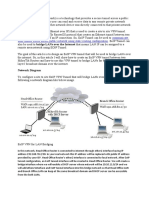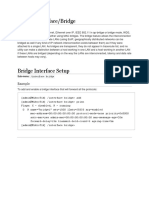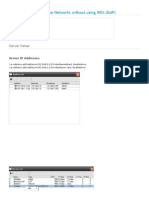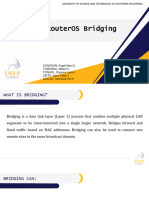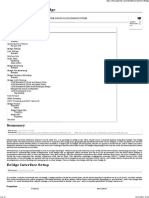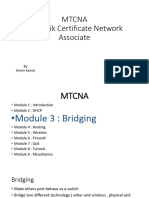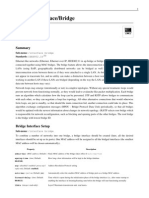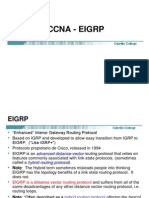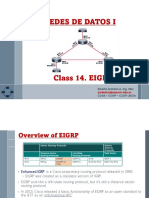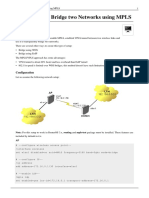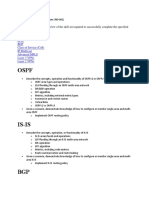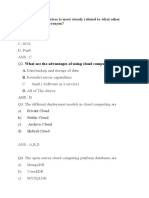0% found this document useful (0 votes)
258 views5 pagesEoIP Tunneling Guide for MikroTik
Ethernet over IP (EoIP) Tunneling allows routers to bridge Ethernet networks over an IP connection by encapsulating Ethernet frames in GRE packets. EoIP tunnels can transport full Ethernet frames between routers, enabling LANs to be bridged over the internet, encrypted tunnels, or wireless networks. Setting unique MAC addresses and an MTU of 1500 for each EoIP interface allows transparent bridging between networks. For example, an EoIP tunnel can bridge an office LAN to a remote LAN over a wireless link, making them appear as a single broadcast domain.
Uploaded by
bobi1971Copyright
© © All Rights Reserved
We take content rights seriously. If you suspect this is your content, claim it here.
Available Formats
Download as PDF, TXT or read online on Scribd
0% found this document useful (0 votes)
258 views5 pagesEoIP Tunneling Guide for MikroTik
Ethernet over IP (EoIP) Tunneling allows routers to bridge Ethernet networks over an IP connection by encapsulating Ethernet frames in GRE packets. EoIP tunnels can transport full Ethernet frames between routers, enabling LANs to be bridged over the internet, encrypted tunnels, or wireless networks. Setting unique MAC addresses and an MTU of 1500 for each EoIP interface allows transparent bridging between networks. For example, an EoIP tunnel can bridge an office LAN to a remote LAN over a wireless link, making them appear as a single broadcast domain.
Uploaded by
bobi1971Copyright
© © All Rights Reserved
We take content rights seriously. If you suspect this is your content, claim it here.
Available Formats
Download as PDF, TXT or read online on Scribd
/ 5






